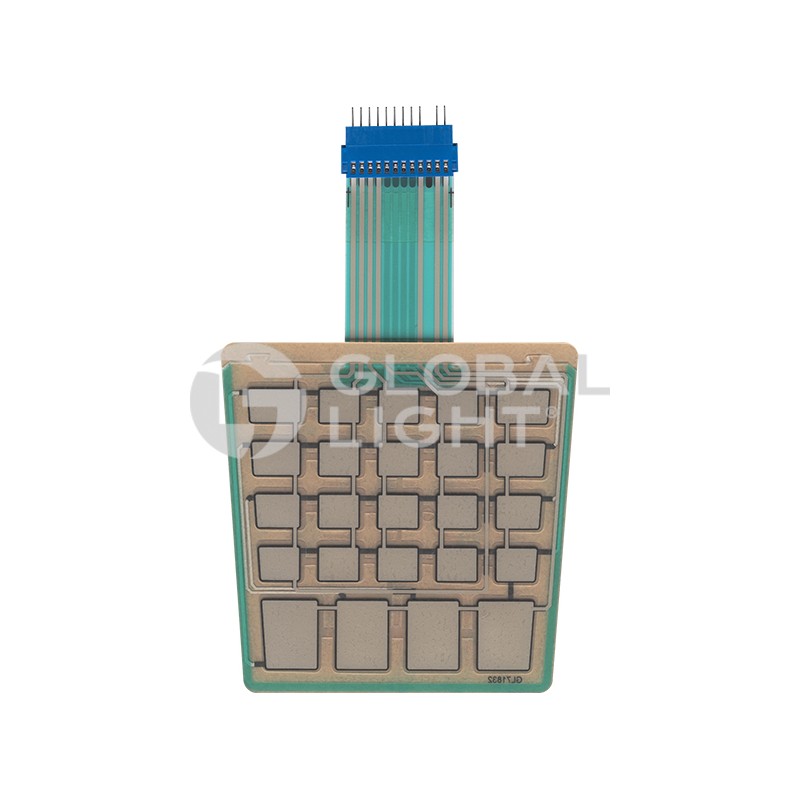Recognizing Membrane Switches Over: The Key to Reliable and long lasting Controls

What Are Membrane Layer Buttons?
Membrane layer switches are a sophisticated service in the world of interface modern technology, combining functionality and design effortlessly. These gadgets act as a user interface in between users and electronic systems, integrating several components into a compact format. Usually built from versatile, slim layers of products, membrane switches are developed to reply to touch, allowing individuals to communicate with machinery and electronic devices effectively.
The primary components of a membrane layer button consist of a printed circuit layer, graphic overlay, and a spacer layer that avoids unintentional activation. The graphic overlay can be customized to mirror brand name identification or user preferences, boosting visual appeals while ensuring usability. Membrane layer buttons are typically utilized in various applications, consisting of medical devices, customer electronic devices, and industrial equipment, owing to their durability and resistance to ecological aspects such as wetness and dust.
Among the crucial advantages of membrane layer buttons is their ability to hold up against damage, making them optimal for high-traffic environments. In addition, they are light-weight and require marginal area, permitting for cutting-edge styles in item advancement. Overall, membrane layer switches stand for a effective and practical selection for modern digital interfaces, weding technology with user-centric layout principles.
Just How Membrane Changes Job
The operation of membrane layer switches hinges on a basic yet reliable mechanism that translates individual input right into digital signals. When a user presses the switch, the top layer warps, permitting a conductive component in the circuit layer to make call with a corresponding conductive pad on the underside of the graphic overlay.
The layout of membrane switches can vary, but they commonly include domes or responsive elements to provide feedback to the individual, improving the general experience - membrane switch. The products made use of in membrane layer buttons, such as polyester or polycarbonate, add to their durability and resistance to environmental elements, including wetness and dust. Moreover, the published circuits are normally enveloped, which shields them from damage over time.
Benefits of Membrane Buttons

In addition, membrane layer switches are understood for their toughness. Created from durable products, they are immune to dirt, dampness, and physical wear, which significantly extends their lifespan compared to traditional mechanical switches. This resilience makes them particularly suitable for high-traffic environments and applications requiring longevity.
Another significant benefit is the convenience of cleansing and upkeep. The smooth surface area of membrane changes reduces dust accumulation and is often impervious to spills, making them ideal for setups that call for regular sanitization.
Additionally, membrane switches supply a structured profile, resulting in a thinner design that can be incorporated right into different devices without including mass. This function not just boosts the aesthetic appeal but additionally adds to a more ergonomic item style.
Applications of Membrane Buttons
Functional and easy to use, membrane layer switches locate applications across a wide variety of markets, including clinical devices, customer electronics, and commercial devices. In the medical field, these switches are important to devices such as analysis devices, patient tracking systems, and infusion pumps, where integrity and ease of cleansing are critical. Their capability to endure rough atmospheres and keep performance makes them ideal for such applications.

In consumer electronics, membrane layer switches are utilized in items like microwaves, cleaning devices, and remotes - membrane switch. Their sleek style permits instinctive user interfaces, improving the total user experience while supplying durability and resistance to tear and use
Commercial tools also benefits from membrane layer buttons, specifically in sites control panels for machinery and automation systems. These switches provide security versus dirt and dampness, guaranteeing constant efficiency in difficult settings. Furthermore, their customizable features allow makers to customize them to details functional needs, enhancing efficiency and functionality.
Picking the Right Membrane Layer Change
When choosing a membrane switch, it is vital to think about various elements that influence efficiency and viability for certain applications. The main considerations why not check here include ecological conditions, responsive comments, sturdiness, and design specifications.
First, analyze the operating setting; switches exposed to moisture, chemicals, or severe temperatures require details products to guarantee longevity and capability. Next off, assess the need for responsive comments. Depending on customer interaction, some applications might profit from a tactile feedback to verify activation, while others may favor a non-tactile style for aesthetic factors.
Sturdiness is another vital aspect; membrane layer switches should be made to endure frequent usage, impacts, and abrasion. Make certain the selected button can endure the anticipated lifecycle, particularly in high-usage circumstances.

Verdict
Finally, membrane switches over serve as important components in the layout of resilient and dependable control systems across numerous markets. Their compact layout, combined with durable building and personalized functions, enhances individual interaction while making sure longevity sought after environments. The convenience of membrane switches over allows for customized solutions that satisfy specific operational demands, reinforcing their value in modern innovation. As sectors continue to advance, the significance of incorporating effective membrane button solutions can not be overstated.
Membrane layer switches over represent an essential facet of modern-day interface design, blending functionality with durability in different applications.Membrane layer buttons are a sophisticated service in the realm of individual interface innovation, integrating performance and style effortlessly. Commonly created from adaptable, slim layers of products, Click This Link membrane layer buttons are created to react to touch, allowing individuals to communicate with machinery and electronic devices effectively.
The design of membrane switches can vary, however they commonly include domes or tactile components to supply comments to the customer, enhancing the general experience.In verdict, membrane layer changes serve as important components in the layout of reliable and sturdy control systems throughout different industries.
Comments on “The Role of Membrane Switches in Enhancing Device Functionality”